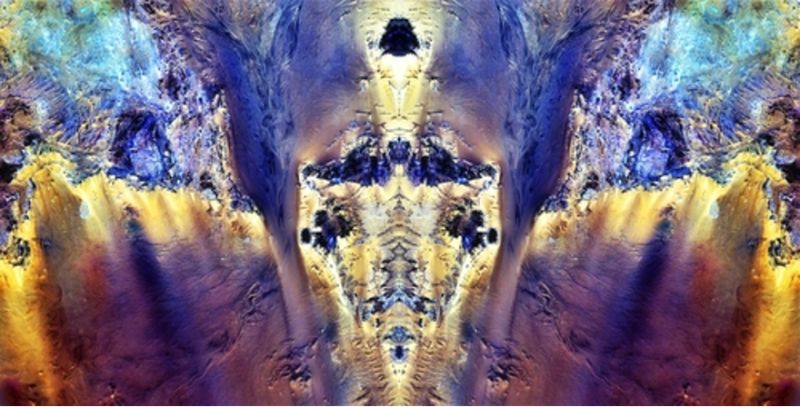𝐈𝐧𝐟𝐫𝐚𝐬𝐭𝐫𝐮𝐜𝐭𝐮𝐫𝐞 𝐚𝐮𝐭𝐨𝐧𝐨𝐦𝐨𝐮𝐬𝐥𝐲 𝐭𝐡𝐫𝐨𝐮𝐠𝐡 𝐬𝐭𝐫𝐚𝐭𝐞𝐠𝐢𝐜 𝐜𝐲𝐛𝐞𝐫𝐬𝐞𝐜𝐮𝐫𝐢𝐭𝐲 𝐦𝐞𝐚𝐬𝐮𝐫𝐞𝐬.
𝑪𝒚𝒃𝒆𝒓𝒔𝒆𝒄𝒖𝒓𝒊𝒕𝒚 𝑨𝒓𝒄𝒉𝒊𝒕𝒆𝒄𝒕𝒖𝒓𝒆 𝑭𝒐𝒄𝒖𝒔𝒆𝒔 𝒐𝒏 𝑻𝒉𝒓𝒆𝒂𝒕 𝑨𝒄𝒕𝒐𝒓𝒔 𝒃𝒚 𝒅𝒆𝒗𝒆𝒍𝒐𝒑𝒊𝒏𝒈 𝒂𝒏 𝒂𝒖𝒕𝒐𝒏𝒐𝒎𝒐𝒖𝒔𝒍𝒚 𝒅𝒆𝒇𝒆𝒏𝒅𝒊𝒏𝒈 𝑰𝒏𝒇𝒓𝒂𝒔𝒕𝒓𝒖𝒄𝒕𝒖𝒓𝒆. 𝑫𝒓𝒂𝒘𝒊𝒏𝒈 𝒊𝒏𝒔𝒊𝒈𝒉𝒕𝒔 𝒇𝒓𝒐𝒎 𝑯𝒂𝒏𝒏𝒊𝒃𝒂𝒍'𝒔 𝒄𝒓𝒐𝒔𝒔𝒊𝒏𝒈 𝒐𝒇 𝒕𝒉𝒆 𝑨𝒍𝒑𝒔 - (218 𝑩𝑪)
Hannibal undertook the daunting task of leading his troops through the challenging terrain of the Alps, marking one of the boldest military campaigns in history. Navigating through snowy, icy landscapes and confronting local tribes in mountain passes presented significant challenges. Drawing parallels to cybersecurity and modern cyber threats, there are valuable lessons to be gleaned. Based on my experience in the field, I would like to propose some suggestions and premises for you to have. It is essential to recognize that adversaries continuously refine their tools and techniques by testing them against known security tools in the market to breach security measures, potentially targeting known tools within an enterprise network infrastructure and exploiting misconfiguration.
Suppose adversaries have already tested their tools against the Enterprise's potentially known security tools. In that case, we, the defenders, must design an infrastructure that can autonomously defend itself. We must create a mitigation strategy to address design vulnerabilities and make it challenging, if not impossible, for adversaries to achieve their goals.
𝐓𝐡𝐞𝐫𝐞 𝐚𝐫𝐞 𝐟𝐞𝐰 𝐜𝐨𝐦𝐩𝐚𝐫𝐢𝐬𝐨𝐧𝐬 𝐛𝐞𝐭𝐰𝐞𝐞𝐧 𝐝𝐞𝐭𝐞𝐫𝐦𝐢𝐧𝐞𝐝 𝐜𝐲𝐛𝐞𝐫 𝐭𝐡𝐫𝐞𝐚𝐭 𝐚𝐜𝐭𝐨𝐫𝐬 𝐚𝐧𝐝 𝐇𝐚𝐧𝐧𝐢𝐛𝐚𝐥'𝐬 𝐜𝐫𝐨𝐬𝐬𝐢𝐧𝐠 𝐨𝐟 𝐭𝐡𝐞 𝐀𝐥𝐩𝐬.
➡️ The Romans were surprised by Hannibal's crossing of the Alps. They anticipated he would take a more conventional route.
➡️ Determined cyber threat actors often use unexpected attack vectors or novel exploits to catch their targets off guard.
➡️ Hannibal had to adapt to harsh and unfamiliar terrain, deal with supply issues, and maintain the morale of his troops.
➡️ Skilled cyber threat actors constantly adapt to evolving security defenses. They analyze the target environment and modify their tactics accordingly.
➡️ Hannibal employed deceptive tactics, such as feints and ambushes, to mislead the Romans and gain battlefield advantages.
➡️ Cyber attackers use deception to mislead defenders, such as creating false flags to attribute attacks to other groups or using obfuscation techniques to hide their activities.
Hannibal's Alps crossing and cyber threat actors' tactics require planning, flexibility, and overcoming obstacles to achieve strategic goals.

- By Admin
- May 31, 2025